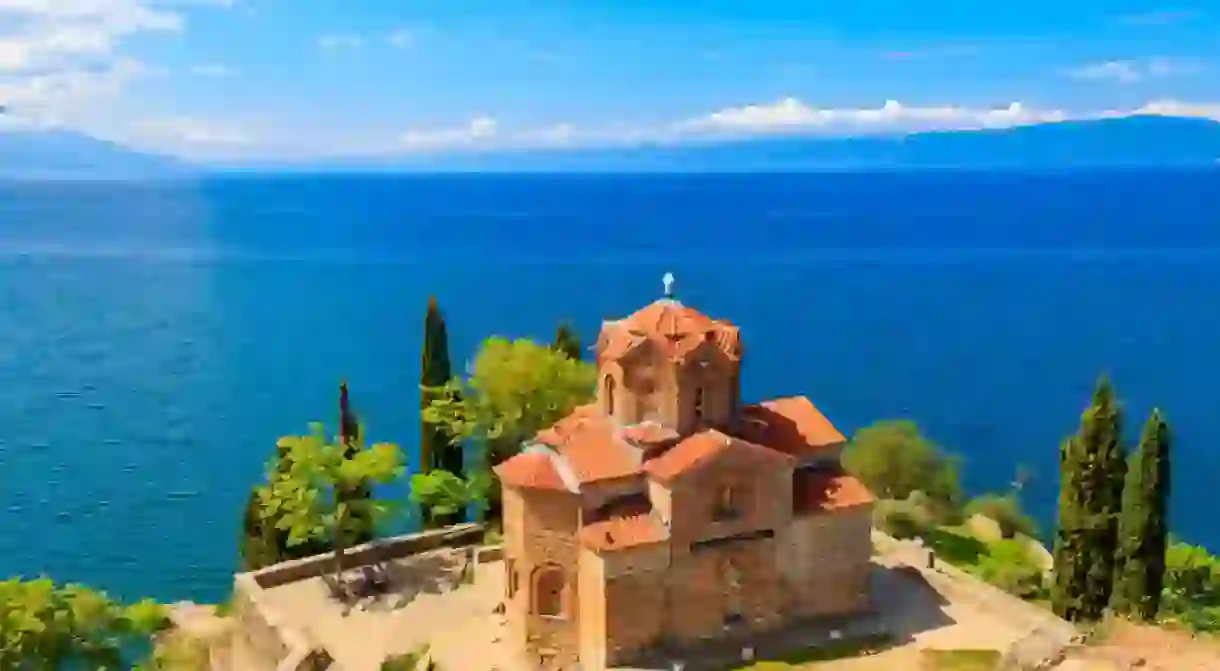The Most Beautiful Places in the Balkans

The Balkans is a loosely defined region in Europe that is still off the radar for many tourists due to the memories of conflicts and wars from the 1990s and their poor tourism marketing strategies. These countries, however, are a breath of fresh air for the those used to traveling in Western Europe, both for their undiscovered beauty and the unspoiled nature. Here’s our pick of the most beautiful places to visit in the Balkan countries.
Split, Croatia
Natural Feature

This city on the Adriatic coast is the perfect combination of natural and man-made beauty. In the year 305, the Roman emperor Diocletian chose it as his retirement home, building a palace that is now simply a part of the fabric of the city’s historic center. Your options for sightseeing are varied and equally gorgeous. You can stroll along the Riva on the waterfront, hike up one of the neighboring hills to get a view over the city, or relax on the beach and watch the water lap onto the stony beaches. Recommended by Lani Seelinger.
Plitvice Lakes, Croatia
Park

Gjirokastra, Albania
Natural Feature

Known as the ‘City of Stone’, Gjirokastra in Southern Albania is UNESCO listed because of the Ottoman style houses that you can find throughout the city. While only having just under 20,000 inhabitants, Gjirokastra is home to a sizeable Greek minority, in addition to being the birthplace of two of the most internationally well-known Albanians, Enver Hoxha, the communist leader, and Ismail Kadare, the novelist and once-dissident. Although the area has been inhabited since at least the Bronze age, most of the buildings are from the 17th and 18th centuries. Recommended by Lani Seelinger.
Veliko Tarnovo, Bulgaria

Subotica, Serbia
Natural Feature

In typical Balkan fashion, Subotica has no majority ethnic group, but is instead made up of a healthy mix of Hungarians, Serbs, Croats and several others. It is the seat of the Vojvodina region in Serbia, which is largely Hungarian, so it is the home of several famous Hungarians, like the writer Dezso Kostolanyi, or the original Dracula, actor Bela Lugosi. The city has a long and complicated history of many empires moving in and out, but the notable Art Nouveau architecture comes from the period of the Austro-Hungarian monarchy. Recommended by Lani Seelinger.
Kotor, Montenegro
Natural Feature

Peles Castle, Romania
Historical Landmark

Ohrid, Macedonia

Visoki Dečani, Kosovo
Historical Landmark

This Serbian Orthodox Christian monastery in Kosovo houses the largest Orthodox church in the Balkans and is worth a visit just to try to understand the complicated religious and ethnic history of the region. However, the main reason for its inclusion on the UNESCO list is the frescos that decorate the interior of the church. They make up the largest surviving collection of Serbian medieval art, and they depict scenes from the Bible, members of noble families, and a plethora of Orthodox saints, among other things. Recommended by Lani Seelinger.
Berat, Albania

Ljubljana, Slovenia
Historical Landmark

Another example of a city with numerous visible influences, the best way to encapsulate the feeling of Ljubljana is to imagine a former Hapsburg city on the Mediterranean. The best way to enjoy the laid-back yet lively feel of the city is to sit in one of the cafes on the waterway in the center and take your time with a nice glass of Slovenian wine. Many of the buildings throughout the city are the work of noted Slovene architect Jože Plečnik. He did not, however, design the Vienna Secession-style Dragon Bridge, where you can find four of those winged symbols of the city. Recommended by Lani Seelinger.
Prizren, Kosovo
Bridge

Sibiu, Romania

Tara National Park, Serbia
Park

Durmitor National Park, Montenegro
Natural Feature

While much of Montenegro is covered in mountains, Durmitor is the center of mountain tourism in the country, be it for hiking, skiing, or simply going to enjoy the views. Numerous lakes dot the landscape, and in the autumn the whole park lights up with the changing colors of the leaves. One part of the park to check out is Tara River Canyon, which is the second biggest in the world after the Grand Canyon. You’ll certainly not run out of scenic outlooks when you’re driving around Durmitor. Recommended by Lani Seelinger.
Mostar, Bosnia and Herzegovina
Bridge

Nessebar, Bulgaria
Historical Landmark

This small city on the Black Sea is another good example of how nature and culture can come together to create truly wondrous sites. Nessebar has been inhabited for about 3000 years by various cultures and empires, and their remnants are sprinkled across the city in the form of buildings from different eras and architectural styles, especially a large collection of Eastern Orthodox churches. Its position on the coast, of course, with one half of the city jutting out on a thin peninsula into the sea, also contributes to its status. Recommended by Lani Seelinger.
Bled, Slovenia
Church

Gökçeada, Türkiye














